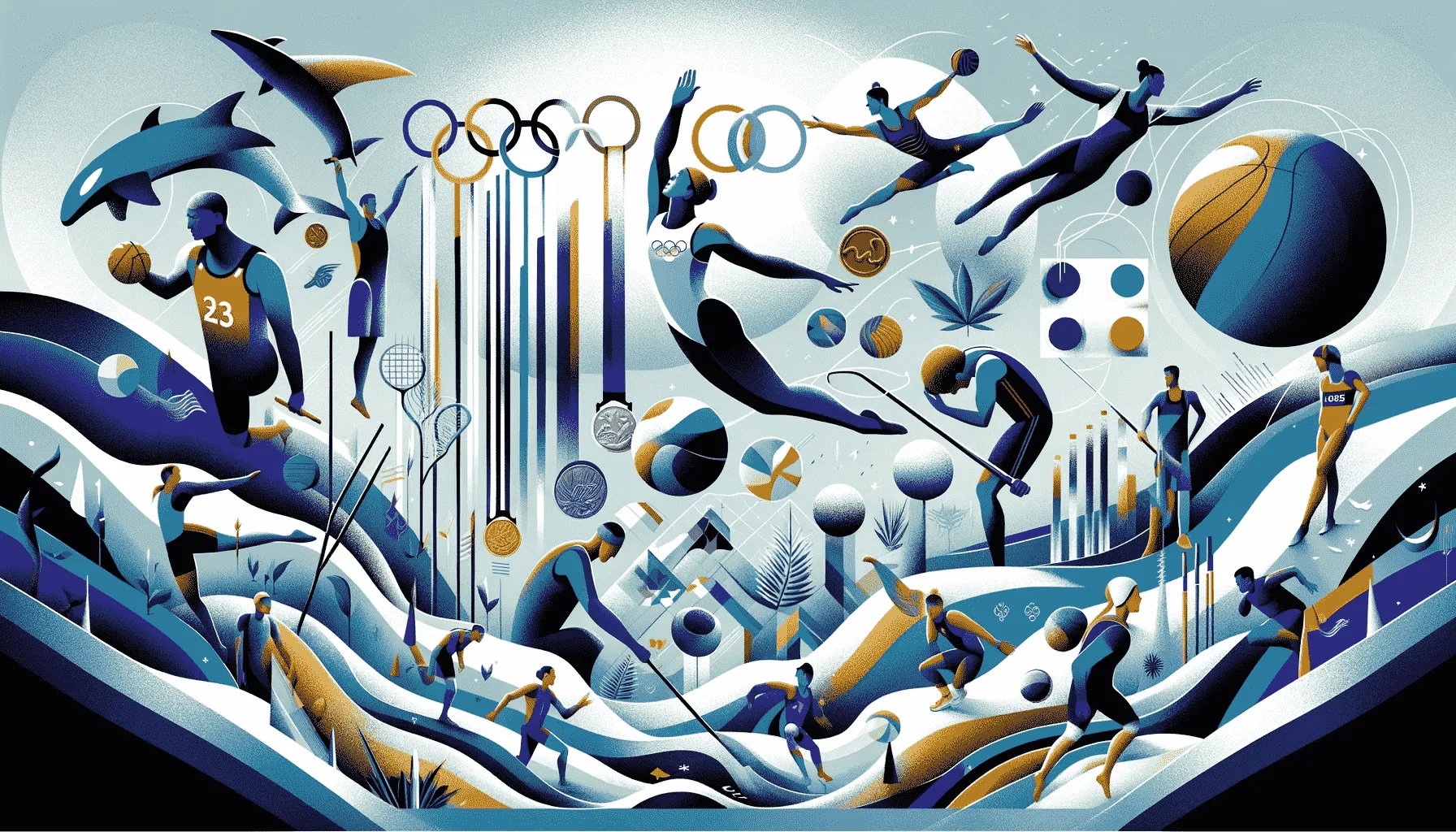Video games have come a long way since their inception in the early 1970s. What started as a simple form of entertainment has now become a billion-dollar industry with a massive following all over the world. From arcade classics like Pac-Man to modern-day masterpieces like Fortnite, gaming has evolved into an integral part of popular culture. As technology continues to advance, so does the world of gaming, attracting people from all walks of life.
But who exactly are these gamers? What do they look like, and what drives them to turn on their consoles or fire up their PCs? In this article, we’ll delve deeper into the statistics and demographics of gamers. With data gathered from reputable sources like PlayToday, we’ll explore the different types of gamers, their habits, and their impact on the gaming industry as a whole.
The Rise of Gaming: From Niche Hobby to Mainstream Phenomenon

Gaming has come a long way from its humble beginnings. It’s no longer just a niche hobby but a mainstream phenomenon that has captured the hearts and minds of millions around the world. The advancements in technology and the rise of online gaming have contributed significantly to this growth. Anyone with a smartphone, tablet, or computer can now access a vast array of games, making it more accessible than ever before.
According to a report by Newzoo, the global game market is expected to reach $159.3 billion in revenues in 2020. This figure is a 9.3% increase from the previous year, highlighting the steady growth of the industry. With more and more people turning to gaming for entertainment, it’s essential to understand the demographics of this expanding market.
Outline 1: Gender and Age – Breaking Stereotypes
Gender Breakdown
One of the most significant debates surrounding gaming is the gender split among gamers. For a long time, gaming has been perceived as a predominantly male-dominated activity. However, recent statistics paint a different picture. According to a report by the Entertainment Software Association (ESA), 46% of gamers in the United States are female, and this number is expected to continue rising.
While some genres like first-person shooters and sports games still have a higher percentage of male players, other genres such as puzzle and role-playing games have more female players. This shift in demographics can be attributed to the increasing popularity of mobile gaming and the rise of female streamers and content creators who have helped break down gender stereotypes in the gaming world.
An Ageless Hobby
Another stereotype that has plagued gaming for years is the belief that it’s an activity exclusively enjoyed by youngsters. However, this couldn’t be further from the truth. The average age of gamers worldwide is 34 years old, according to Newzoo’s Global Games Market Report. This increase in age can be attributed to the growth of casual and mobile gaming, which appeals to a wider age range.
But what about older gamers? Are they a significant part of the gaming market? The answer is yes. In fact, the number of gamers aged 50 and above has risen significantly in recent years. A study by AARP found that 45% of adults aged 50+ play video games regularly, with most of them citing it as a way to relieve stress and stay mentally sharp.
Outline 2: Socioeconomic Status – Gaming knows no Bounds
Breaking Down Socioeconomic Barriers
Gaming used to be viewed as a hobby for the wealthy due to its high costs. But with the advent of affordable consoles and PCs, a vast majority of people from all socioeconomic backgrounds can now enjoy gaming. In fact, a study by Pew Research Center found that 44% of households earning less than $30,000 annually have a gaming console. This shift has opened up the world of gaming to a more diverse audience, including those from lower-income families.
The Impact of Mobile Gaming
Mobile gaming has been a game-changer in the world of gaming, making it accessible to people from all walks of life. With smartphones becoming more affordable and internet access becoming widespread, mobile gaming has become a popular choice for gamers worldwide. In fact, Newzoo’s report found that 2.2 billion gamers will play on their mobile devices in 2020, accounting for almost half of the global gaming market.
This rise in mobile gaming can also be attributed to its convenience, as players can access games anytime and anywhere. Additionally, with a wide range of free-to-play games available, cost is no longer a barrier for those who can’t afford traditional gaming setups.
Outline 3: Gaming Preferences – The Many Faces of Gamers

A Diverse Range of Genres
Gone are the days when gaming was limited to a few genres like action and adventure. As the industry has evolved, so have the preferences of gamers. From puzzle games to simulation games, there’s now something for everyone. According to ESA’s report, the most popular genres among gamers in the United States are casual (60%), action (55%), and sports (50%).
Additionally, the rise of multiplayer online games has led to the growth of esports, which has become a billion-dollar industry in its own right. With a diverse range of genres and platforms, gaming has become a versatile form of entertainment that caters to a vast array of interests.
The Appeal of Virtual Reality
Virtual reality (VR) has been hailed as the future of gaming, and it’s easy to see why. With the ability to fully immerse players into a virtual world, VR has attracted a lot of interest from gamers. In fact, a report by Grand View Research projects that the VR gaming market will reach $45.09 billion by 2027.
The appeal of VR lies in its ability to provide a unique and immersive experience, allowing players to feel like they are a part of the game. This technology has also brought new opportunities for game developers to create innovative and interactive experiences, further expanding the world of gaming.
Outline 4: Online Gaming – A Connected Community
The Rise of Online Gaming
The advent of the internet has brought significant changes to the gaming industry. With the rise of online gaming, players can now connect and play with others from all over the world, making it a more social and connected experience. A report by GamesIndustry.biz found that 2.69 billion gamers worldwide played games online in 2020, marking a 9.3% increase from the previous year.
The appeal of online gaming goes beyond just playing with others. It has also created a thriving community of gamers who share a common interest. With the growth of streaming platforms like Twitch and YouTube, where gamers can watch and interact with their favorite content creators, this sense of community is only expected to continue growing.
Cross-Platform Play: Bridging the Gap
One of the most significant developments in online gaming is the rise of cross-platform play. This feature allows players on different platforms to play together, breaking down barriers and bringing communities together. In the past, gamers were limited to playing with those who owned the same console or PC, but now, thanks to cross-platform play, they can connect with anyone regardless of their choice of platform.
This move towards cross-platform play has been highly praised by gamers, and it has also opened up new opportunities for developers to reach a wider audience. Additionally, with the upcoming release of next-generation consoles, cross-platform play is expected to become even more prevalent, further bridging the gap between players.
Outline 5: The Impact of Gaming on Society
Positive Effects of Gaming
Gaming has often been viewed as a form of mindless entertainment, but research has shown that it can have numerous positive effects on individuals and society as a whole. A study by the University of Oxford found that playing video games could have a positive impact on mental health, helping individuals cope with stress and anxiety.
Additionally, gaming has also been linked to improved cognitive skills, memory, and problem-solving abilities. Games like Minecraft have also been used in educational settings to teach students about coding and design, showcasing the potential for games to be used as learning tools.
Challenges and Controversies
While gaming has its benefits, it has also faced its fair share of controversies and challenges. One of the most significant issues is the prevalence of gaming addiction. The World Health Organization (WHO) classified gaming disorder as a mental health condition in 2018, highlighting the need for more awareness and resources to address this issue.
Another challenge facing the gaming industry is the lack of diversity and representation. While there have been efforts to improve representation in recent years, there is still a long way to go in terms of creating inclusive and diverse characters and storylines.
Outline 6: The Future of Gaming – What Lies Ahead?

Continued Growth and Evolution
As technology continues to advance, so will the world of gaming. With the upcoming release of next-generation consoles and the growth of emerging technologies like cloud gaming and AR/VR, the possibilities for gaming are endless. Additionally, the increasing popularity of esports and the rise of mobile gaming will continue to shape the industry and attract new players.
The Importance of Diversity and Inclusivity
With a growing and diverse community of gamers, it’s crucial for the industry to reflect this diversity in its content and practices. This includes creating more inclusive and representative characters, addressing issues of toxicity in online communities, and promoting diversity in the workplace.
The gaming industry has already taken steps towards this, but there is still a lot of work to be done. With the support and feedback from its diverse community of players, the industry can continue to grow and evolve in a positive direction.
Conclusion: Gaming Goes Beyond Stereotypes
Gaming is no longer just a hobby for teenage boys or a niche activity for the wealthy. It has become a diverse and inclusive form of entertainment enjoyed by people from all walks of life. As technology continues to advance and the demographics of gamers continue to evolve, it’s important to recognize and celebrate the diversity within the gaming community.
From breaking down gender stereotypes to bridging socioeconomic barriers, gaming has shown its ability to bring people together and create a sense of community. And as we look towards the future, it’s essential for the industry to continue promoting diversity and inclusivity to ensure that gaming remains a welcoming and enjoyable experience for all.


